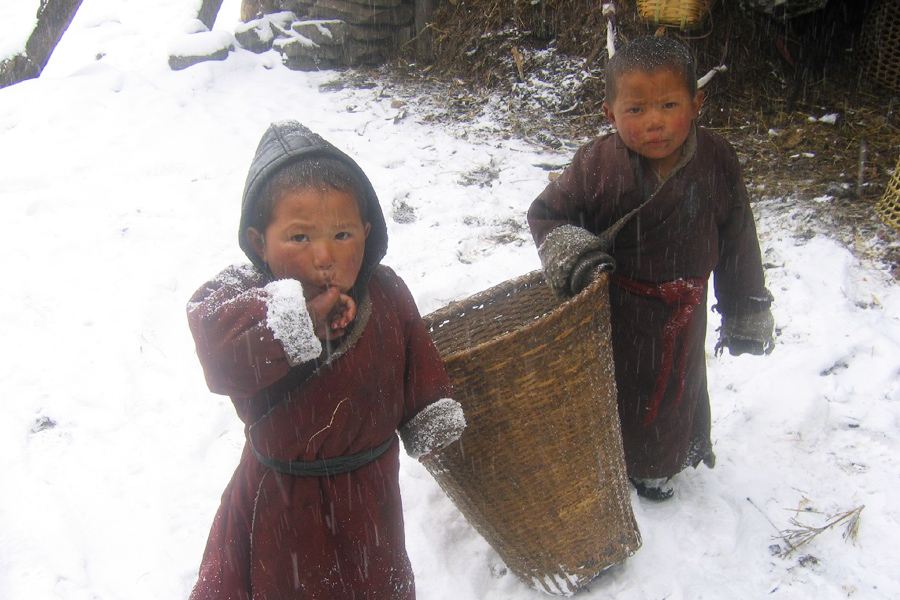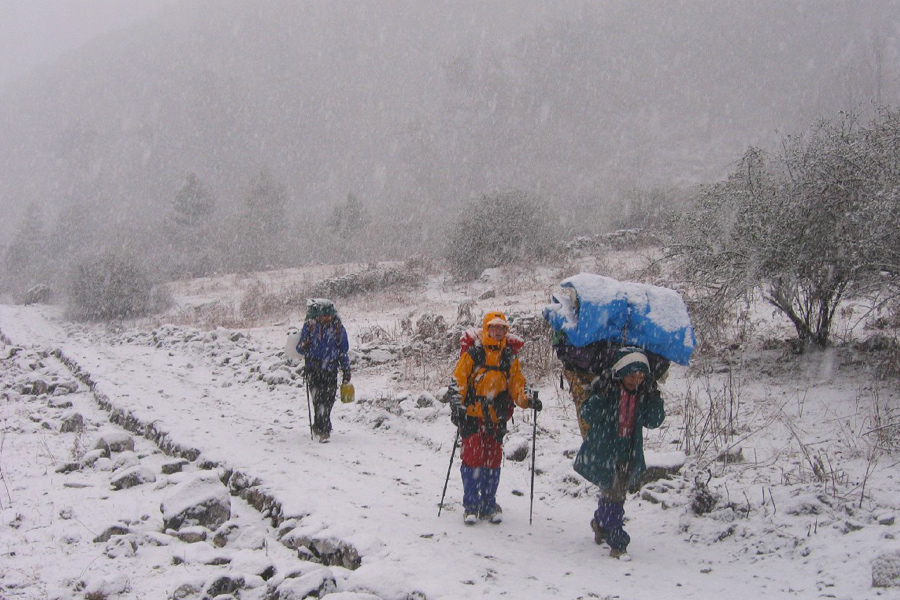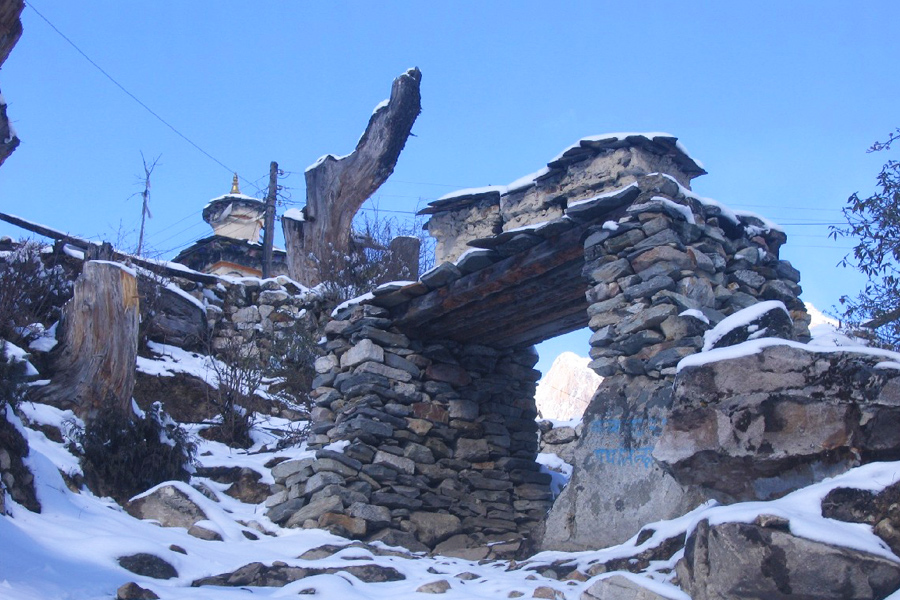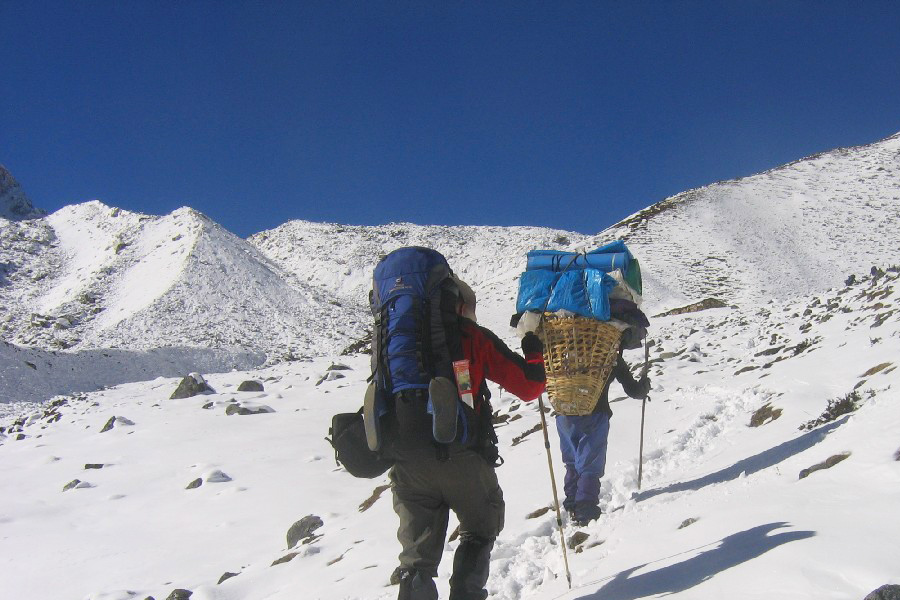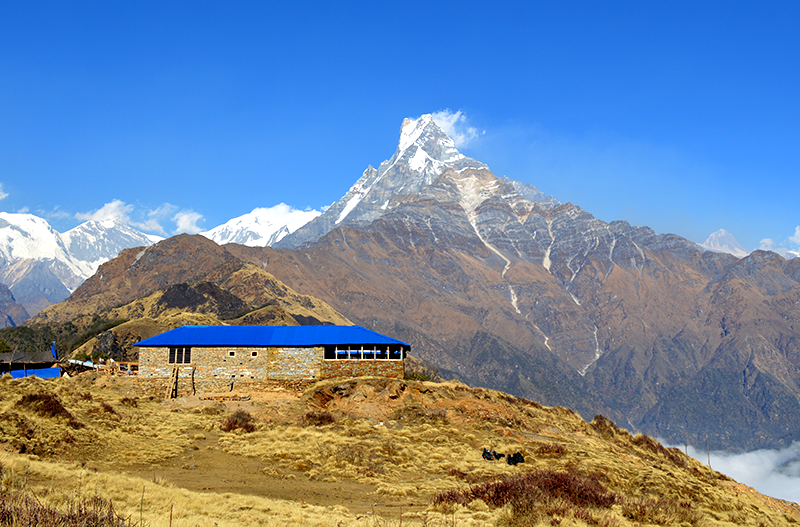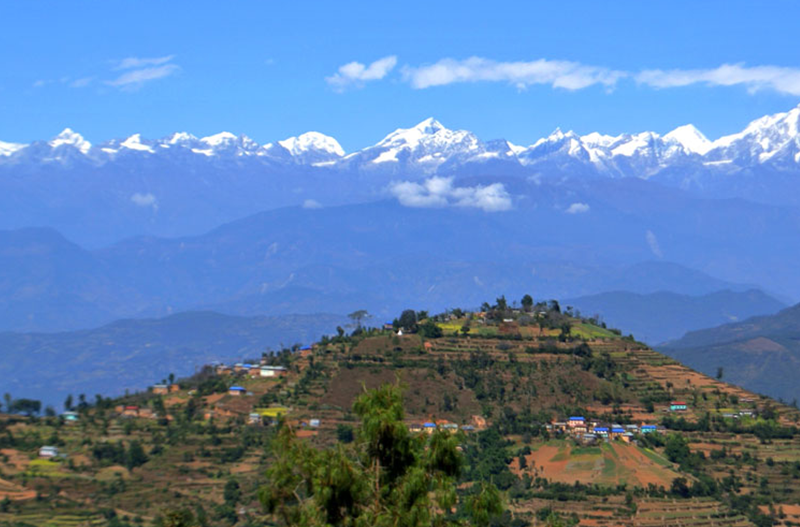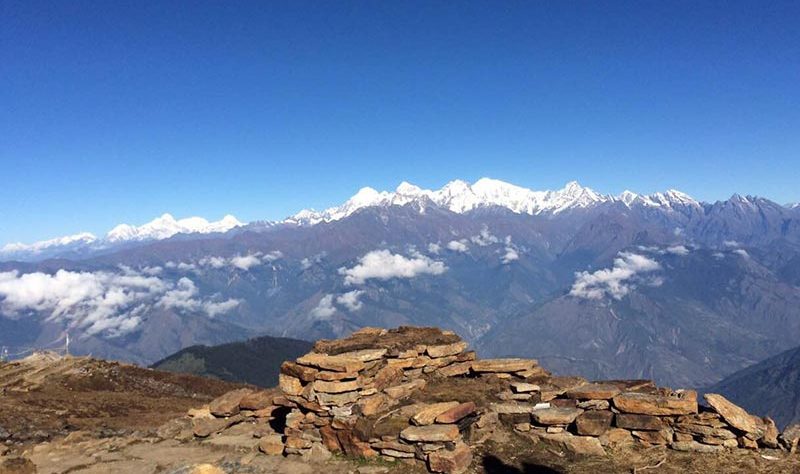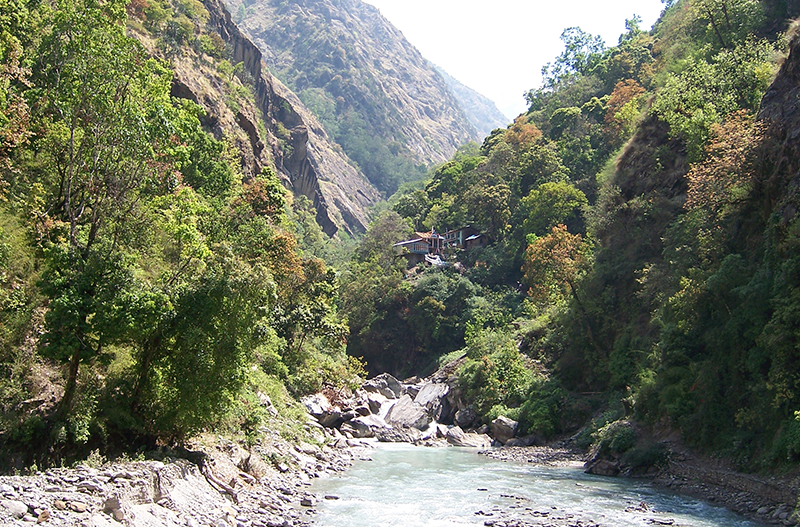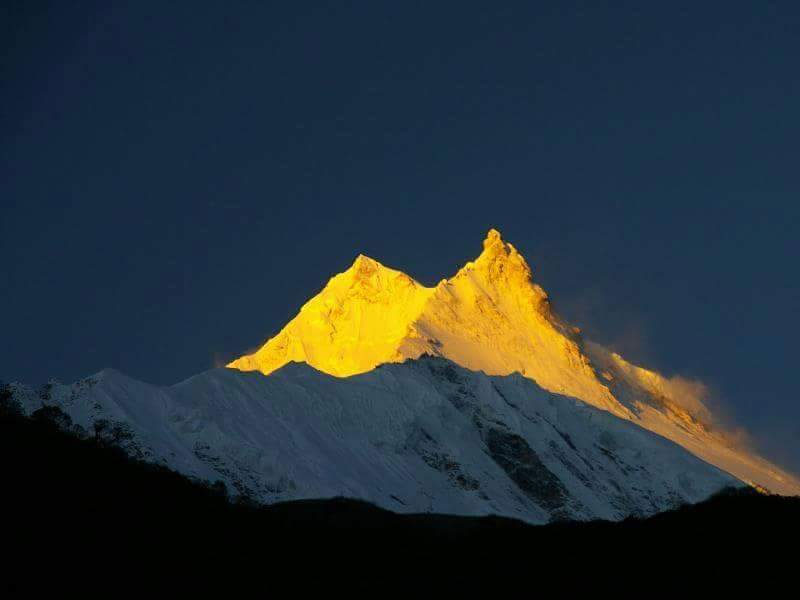
Trip Overview
Manaslu Circuit trek is one of the amazing trekking destinations Nepal has to offer.
It is an epic walk around Mt. Manaslu, the 8th highest mountain in the world. Trekking to Manaslu region opened for foreigners only in 1991 and it is still a restricted region.
Manaslu trek is for adventurous trekkers who want to witness the unexplored and untouched beauty of Manaslu region. This trek serves great for travelers who want serenity and enjoy the peaceful trekking experience.
It is more remote than the other trails so prepare yourselves as you travel and give up comfort for at least 2 weeks.
For further question and queries, please feel free to contact us. It is our pleasure to guide and assist you in planning the trip for you and making sure it is successful.
Table of Contents
When is the best time to go Manaslu Trek?
Autumn season (i.e from September to November) is the best for Manaslu trek.Spring season(i.e from March to May) is also second best time for trekking to Manaslu. Beautiful floras and Mountain View welcomes the visitors on these seasons. In the winter season like late December, January and February, Larkya La pass is quite tough so it is less preferred to go in winter season.
What are the highlights of Manaslu Trek?
Larkya La pass (5213m), fantastic views of the Himalayas like Mt. Manaslu, Annapurna range, Cho-oyu Himal, landscapes, Tibetan influenced Buddhist cultures and traditions, less-crowded, off-the-beaten-path and un repeated path throughout the trials make it different from other trials.
Can I trek Manaslu Circuit solo?
Government of Nepal prohibits solo trekker for Manaslu. Minimum of two trekkers are required for the trek. Since it is off-the-beaten-path, licensed and professional guide is required for the trek. Also porter is suggested to take as it avoids you from carrying luggage and enjoy the trek.
How can I be prepared for Manaslu Trek?
One must have stamina to walk for six to eight hours through rough terrains, uphill and downhill. In order to strengthen the stamina one can go for swimming, cycling, running, short hiking and other physical activities.
Where is the trailhead and trailend of the Trek?
Starting point is Sotikhola and the ending point is Besisahar which is about eight hours drive to and from Kathmandu.
What permits are required for Manaslu Trek?
We need Special Permit (as it is restricted area), Manaslu Conservation Area Project (MCAP) permit
and Annapurna Conservation Area Project (ACAP) permit for this trek.
How much does the Manaslu Trek Costs?
Following costs are associated for this trek:
Restricted Area permit:
For the month of September upto November it is USD 70 per person for the first week and extra USD 10 per person per day there on. Likewise from December to August, it is USD 50 per person for the first week and extra USD 7 per person per day.
Manaslu Conservation Area Permit (MCAP)
USD 30 or NRS 3000 per person.
Annapurna Conservation Area Permit (MCAP)
USD 30 or NRS 3000 per person.
Guide Costs per Day
USD 30 to 35 (Covers accommodation, food, and insurance)
Porter Costs per Day
USD 22 to 30 (Covers accommodation, food, and insurance)
Accommodation Costs per Day
USD 8 to 10 for one twin sharing room
Meals Costs per Day
USD 10per meal which is on average USD 30 per day.
Miscellaneous Cost
It includes costs for charging your gadgets, taking hot bucket shower, buy local handicrafts and tips for the guide and porter.
What type of Accommodation facility do I receive for the Trek?
Accommodations with basic facilities with twin sharing beds in a room and common toilets are offered. It is better to have a warm sleeping bag for the trek.
Why is Tea House Trekking Better than Camping?
Tea house trekking supports local economy as it generates jobs for the local people. Teahouse trekking is more hygienic as the teahouse owner takes responsibility of cleaning the area. Also for the trekkers it becomes expensive as you need to increase the number of porters if you are to do camping. For instance, one porter will serve two trekkers if stay at teahouse whereas two porters for one trekker is required with camping facilities.
What are the meals available during the trek?
Generally items like Dal Bhat, soups, porridge, noodles etc are served on the teahouse. Locally produced vegetables are used for the meal. If you prefer non-veg must check the freshness before placing an order. Carrying dry fruits, chocolates like snicker will help you gain the energy.
Is there Telecommunication and Wifi Facilities in Manaslu Region?
Nearly 40% the area in Manaslu area receives cell phone signal. You have to pay extra charge for using wifi in the places like Samagaun and Samdo. Ncell provides internet package with 4G Sim card in about USD 10 which you can take from Kathmandu.
Is there good Drinking Water in Manaslu Region?
Since you can refill water from the water source which is available in every one or two hours of walking distance, you can take water purification tablet or liquid as buying water is roughly USD 2 and USD 4 in the lower and higher elevation respectively.
What to Pack for Manaslu Trek?
Necessary trekking gears and equipment are to be packed and the weight of the luggage should range between 15 to 20 kgs. List of equipment to be carried are: sleeping bag, down jacket, gloves, liners, trousers, warm socks, trousers, hi-tech boots, walking poles, sun glass, sun cream, sun hat etc.
Can the trip be customized?
Yes it can be. Trip can be customized based upon your time and budget.
Detail Itinerary
-
Day 1 Morning at 06:30 after breakfast, drive to Aarughat to Sotikhola (10 hours drive)
Aarughat is a famous place for Peaches ( a fruit known as aaru in Nepali) and used to be base point for the trek. However, because of the road extension to the Sotikhola, the trek point is Sotikhola. The main attraction of this route are local thatched houses, view of Sringi Himal (7187m), Buri Gandaki Valley, water fall, Magar and Gurung village and the valley has beehives for honey extraction. Overnight rest.
-
Day 2 Sotikhola to Machhakhola (5/6 hours)
The trial crosses the bridge and treks through beautiful saal forests, then climbs onto the ridge above rapids on the Buri Gandaki river. Much of the trial is blasted out of vertical rock walls on the way to Khursane and a Gurung village. The rocky trial then weaves its way up and down, past to tropical water falls on the steep, rocky trial clinging to the side of a cliff. The trial climbs behind a rocky outcrop to an old school then get to Machhakhola, a village. Overnight rest.
-
Day 3 Machhakhola to Jagat (6 hours)
The narrow trial makes some minor ups and downs, often dropping onto gravel bars alongside the river then reaches Khorlabesi. There are few houses, fields of tobacco, wheat and buck wheat, a rudimentary shop, small teashop etc., but the main part of village is far above, on the top of the hill. After more ups and downs there is a small trial-side hot spring then the route reaches to Taatopani, there is small shop nearby stone shrine and several spouts of hot water. The trial climbs over another ridge and crosses the Buri Gandaki on a suspension bridge in a state of moderate decay. The path goes through rugged trial after crossing landslide, few houses, well crafted staircase and you will be at the Jagat. Overnight rest.
-
Day 4 Jagat to Ghap (6/7 hours)
Climb over a rocky ridge Salley, a settlement of some houses and herders’ hut you can explore superb view of Sringi Himal.The trial continues upstream crosses several mills (Ghatta in Nepali) and pass suspension bridge which looks like it’s in danger of collapse. Then trial goes through Philim, a Gurung village, which is famous for their culture and tradition and the trial descends grassy slopes dotted with tall pine trees and climbs up bamboo forests to the Deng Khola, crossing it on an unstable collection of rocks and logs where the newly constructed trial abruptly ends Then you will be at the Dyang where primarily inhabitated by Gurungs who practice Buddhism.
Further, a short distance beyond Dyang the trial re-crosses the Buri Gandaki onto what is now the north bank, and climbs to Rana in 1980.The trial from bridge climbs on steps past a waterfall. Cross the stream on a crooked wooden bridge, then drop to another stream that follows in a steep, narrow canyon. The trial then goes ups and downs through forests, passing an occasional house or mani walls. The mani wall has particularly elegant carvings (Buddha in various meditative pose) said to have been made by a family of stone carvers from Bihi Village.
-
Day 5 Ghap to Namrung (5 hours)
Pass a few houses and three streams in a forest of big firs, alive with birds, including the Danphe, national bird then with ups & downs you will be at the Namrung. There are some interesting rock-hopping exercises stretch if you want to keep your feet dry. Some caves, villages and mountains are the other attractions of this trial.
-
Day 6 Rest Day
-
Day 7 Namrung to Sama
The trial goes up through a forest of firs, rhododendrons and oaks to a promontory and to a stone arch then enters the closely packed houses and wheat fields of Lihi at 2900m. There s a monastery (Gompa) on the side of the trial and another above the village. The spectacular views of the Manaslu, Manaslu north, Naike peak appear at the head of the valley. There is watchtower where villagers sit whole night to scare bears away from the crops. Lho is a big village with a gompa, a rough stone archway at the entrance and a Tibetan style chorten and hugh mani wall at the western end. A spectacular view of Manaslu can be seen from Kani just above from Lho. Drop down to the Damonan Khola, crossing it on a two-span bridge near some mills, then ascend again. The trial follows the north fork of the stream up for a long distance through damp forests on ground that is neither muddy nor icy, depending on season. The trial emerges onto a plateau at Shyaula with a wide vista of Himalchuli(7983m), Ngadi Chuli(7879m) and Manaslu himal. Cross the ridge and trek in and out of the canyon of the Thosang Khola, then descend onto a rock-strewn moraine.
-
Day 8 Sama to Samdo (5 hours)
After Samagaon, walk across fields of wheat and buckwheat, past a chorten, to a large yellow Kani with bright, well preserved painting inside. Only the barely and potatoes are the main crops of this place and tradition along with mountains are the attraction of this trial. There is a mani wall near the small stone-roofed school and the closely packed stone houses at Samdo. A major Tibetan trade route heads east through the village and over the Lajyang La at 5098m to Rhee village in Tibet, a day’s walk from here. The sceneries of mountain range and landscape are the attraction of this trial.
-
Day 9 Rest Day for acclimatization
-
Day 10 Samdo to Larke Phedi (6 hours)
Descend on a wide, gentle trial from Samdo past many fields to a big, old mani wall and stone archway. Climb gently through tundra and juniper opposite the hugh Larkya glaciers that drops from Manaslu North. Avalanches roar down down from this peak, but the trial is safely out of their path.
-
Day 11 Larke Phedi to Bhimtang (8/9 hours)
The route starts up from the ridge in front of the Stone Hut, eventually becoming a long, gentle climb beside a morain. Cross a small, descend a bit to a lake, and keep climbing the ridge until you reach the top of the morain at 4690m. The view of this trial is tremendous. The peaks to the west of the pass are Himlung Himal (7126m) Cheo Himal (6820m), Gyaji Kung (7030m) Kang Guru (6981m) and Annapurna II (7937m). The trial descent along the grassy morain, the valley becomes larger, and the trial heads down to a large meadow, a mani wall and a small tea house.
-
Day 12 Bhimtang to Tilje (6 hours)
The trial descends down and crosses a glacial stream, the head waters of Dudh Khola, on a wooden bridge. After crossing the bridge, the trial headed down through rhododendron & pine forests. Further the trial crosses a landslide, then goes across fields before making a steep climb over a ridge decorated with prayer flags and finally reach at a tea house at Tilje
-
Day 13 Tilje to Jagat (6 hours)
Climb over a small ridge to the stone paved village street and wind among the closely spaced houses of this large Gurung Village to the communal water tap and cross the Dudh Khola and trek along the river embankment. Trek continues to the south through the steepest part of the Marshyangdi river gorge.
-
Day 14 Descend to Besisahar and drive to Kathmandu or Pokhara
Jeep available to drive to Besisahar or can make an easy walk up to Besisahar and then drive to Pokhara
Service Details
- Kathmandu to Sotikhola transfer and return transfer
- Immigration permit (Trekking Permit)
- MCAP and ACAP Permit
- Well experienced guide
- Meals during the trek (Breakfast, Lunch, Dinner)
- Accommodation during the trek
- Expenses and insurance for guide
- Government taxes
- Farewell dinner
- Personal expenses
- Bars and beverages
- Medical expenses
- Insurance in case of emergency
- Tippings
Date & Availability
-
Max Altitute:
5200m
- Trip Duration:
14 Days
- Trip Region:
Other Region
-
Trip Start From:
Aarughat/Sotikhola
-
Trip End In:
Dharapani/Besisahar
-
Permit:
MCAP, ACAP, Immigration Permit
- Trip Season:
September to November and March to April
-
 Activity Level:
Activity Level:Moderate Trek
Quick Inquiry
Trip Reviews
Photo Gallery
